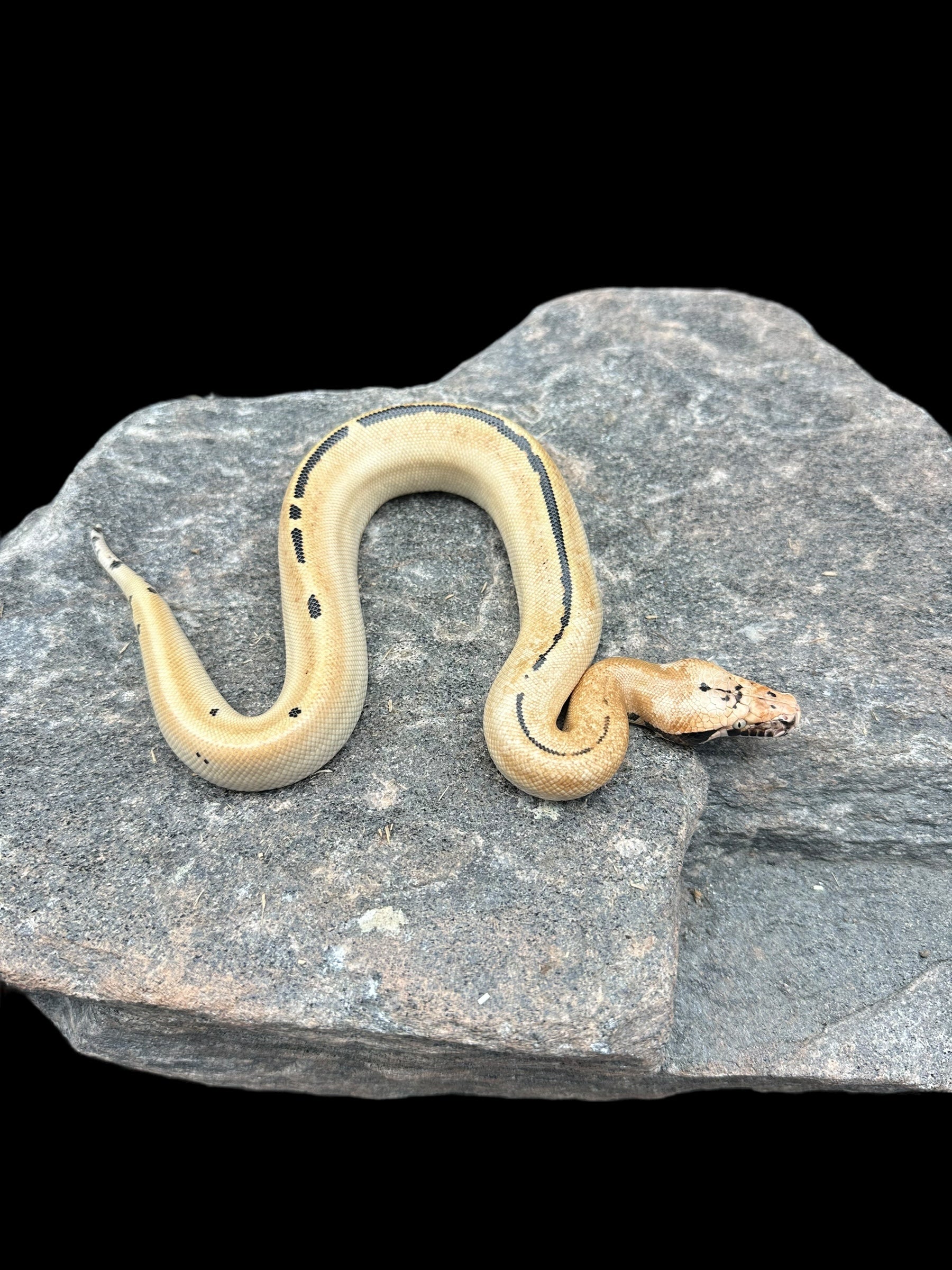Photo Disclaimer
Description
Blood Python (007 Het T+ Albino)
Python brongersmai
Common Names: Blood Python, Brongersmai Python
(“007” = Golden Eye + Matrix combo; T+ = Tyrosinase-Positive Albino, recessive morph, het form carried)
Species Overview
-
Size: Adults typically reach 4–6 feet (1.2–1.8 m), with females being heavier-bodied. Large individuals may surpass 7 feet.
-
Appearance:
-
007 (Golden Eye + Matrix visual combo):
-
Golden Eye: A dominant gene producing golden speckling, brighter colour tones, and enhanced contrast.
-
Matrix: A co-dominant gene reducing and fragmenting the normal Blood Python pattern into broken blotches and flames.
-
Together, they create the 007 phenotype — a snake with striking golden hues and disrupted, fragmented patterns.
-
-
T+ Albino (recessive – het form): This snake carries one copy of the T+ gene. While not expressed visually here, when bred to another T+ het or visual, it can produce T+ Albino offspring, which exhibit rich caramel and golden tones with reduced black pigmentation.
-
-
Distribution: Native to Peninsular Malaysia, Sumatra, and surrounding islands.
-
Habitat: Blood pythons thrive in lowland swamps, marshes, and humid forests, often sheltering under dense vegetation or in burrows.
-
Behaviour: A heavily-bodied, terrestrial ambush predator, feeding mainly on rodents and birds.
Captive Care
-
Enclosure: Adult blood pythons need a minimum of 4 ft × 2 ft × 1.5–2 ft, prioritizing floor space. A deep substrate for burrowing and a large hide are essential, along with a water dish suitable for soaking.
-
Temperature & Humidity: Maintain a basking spot at 86–88°F (30–31°C) with a cooler side at 78–80°F (25–27°C). Humidity should remain 60–70%, with boosts to 80% during shedding.
-
Diet: Juveniles feed readily on hopper rats or similar prey every 5–7 days; adults typically take medium to large rats every 10–14 days. Avoid overfeeding, as this species is prone to obesity.
-
Behaviour in Captivity: Captive-bred stock, including 007s, are generally hardy and easier to manage than wild-caught counterparts. They may be food-driven and defensive when disturbed, but most settle into reliable, predictable captives with proper care.
-
Special Considerations: Blood pythons benefit greatly from naturalistic, humid enclosures with deep substrate, which helps maintain hydration and reduces stress.
Genetics Note
-
Golden Eye (Dominant – Visual): Produces golden speckling and brighter colouration.
-
Matrix (Co-Dominant – Visual): Reduces and fragments the normal pattern, producing a broken and diffused appearance.
-
007 (Golden Eye + Matrix Combo): This dual-gene combo creates a distinct, high-contrast golden look with disrupted patterning.
-
T+ Albino (Recessive – Het Form): Carried as one copy here. When paired with another T+ visual or het, this snake can produce T+ Albino 007 offspring, highly sought-after for their clean caramel tones combined with 007’s reduced pattern.
The Blood Python (007 Het T+ Albino) combines the eye-catching Golden Eye + Matrix 007 look with proven T+ Albino breeding potential, making it a strong project animal for advancing T+ lines with the selective 007 combo.

